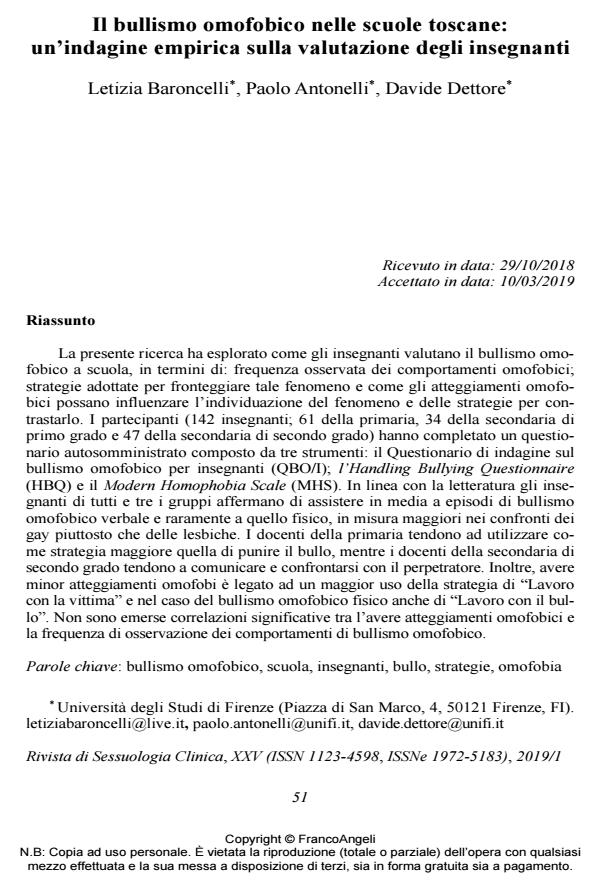Homophobic bullying in Tuscan schools: an empiric study on teachers’ evaluation
Journal title RIVISTA DI SESSUOLOGIA CLINICA
Author/s Letizia Baroncelli, Paolo Antonelli, Davide Dettore
Publishing Year 2019 Issue 2019/1
Language Italian Pages 20 P. 51-70 File size 214 KB
DOI 10.3280/RSC2019-001003
DOI is like a bar code for intellectual property: to have more infomation
click here
Below, you can see the article first page
If you want to buy this article in PDF format, you can do it, following the instructions to buy download credits

FrancoAngeli is member of Publishers International Linking Association, Inc (PILA), a not-for-profit association which run the CrossRef service enabling links to and from online scholarly content.
The research "Homophobic bullying in Tuscan schools: an empiric study on teachers’ evaluation" explored how teachers evaluate homophobic bullying at school, in terms of observed frequency of homophobic behaviours; strategies to tackle this phenomenon and influence of homophobic attitudes. 142 teachers completed a self-administered questionnaire consisting of three tools: The Homophobic Teacher Bullying Questionnaire; Handling Bullying Questionnaire, and Modern Homophobia Scale. The teachers report episodes of verbal homophobic bullying and rarely to the physical one, more in relation gay rather than lesbian persons. Teachers in primary school tend to use as a major strategy to punish bullies, while secondary school teachers tend to communicate with the bully. Moreover, having less homophobic attitudes is linked to a greater use of the strategy of "Working with the victim" and in the case of homophobic physical bullying also of "Working with the bully". There were no significant correlations between having homophobic attitudes and the observed frequency of homophobic bullying behaviour.
Keywords: Homophobic bullying, school, teachers, bully, strategy, homophobia
Letizia Baroncelli, Paolo Antonelli, Davide Dettore, Il bullismo omofobico nelle scuole toscane: un’indagine empirica sulla valutazione degli insegnanti in "RIVISTA DI SESSUOLOGIA CLINICA" 1/2019, pp 51-70, DOI: 10.3280/RSC2019-001003